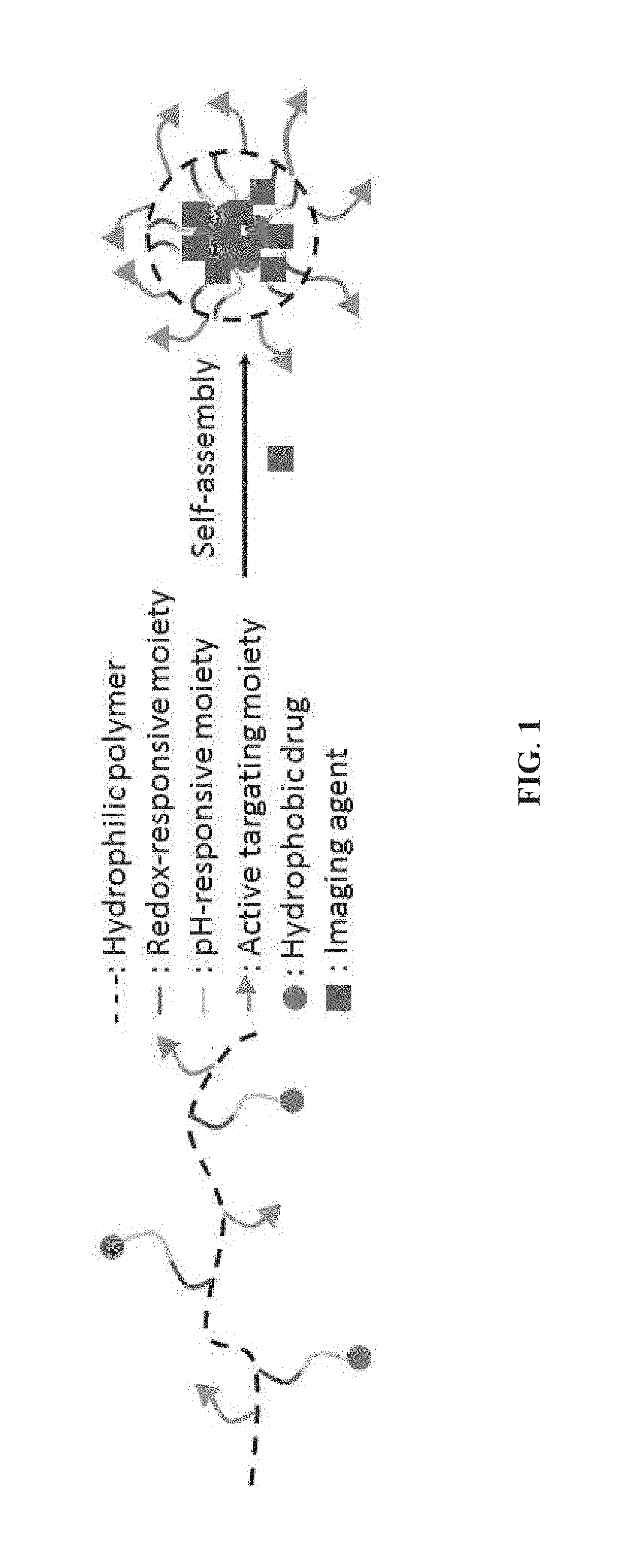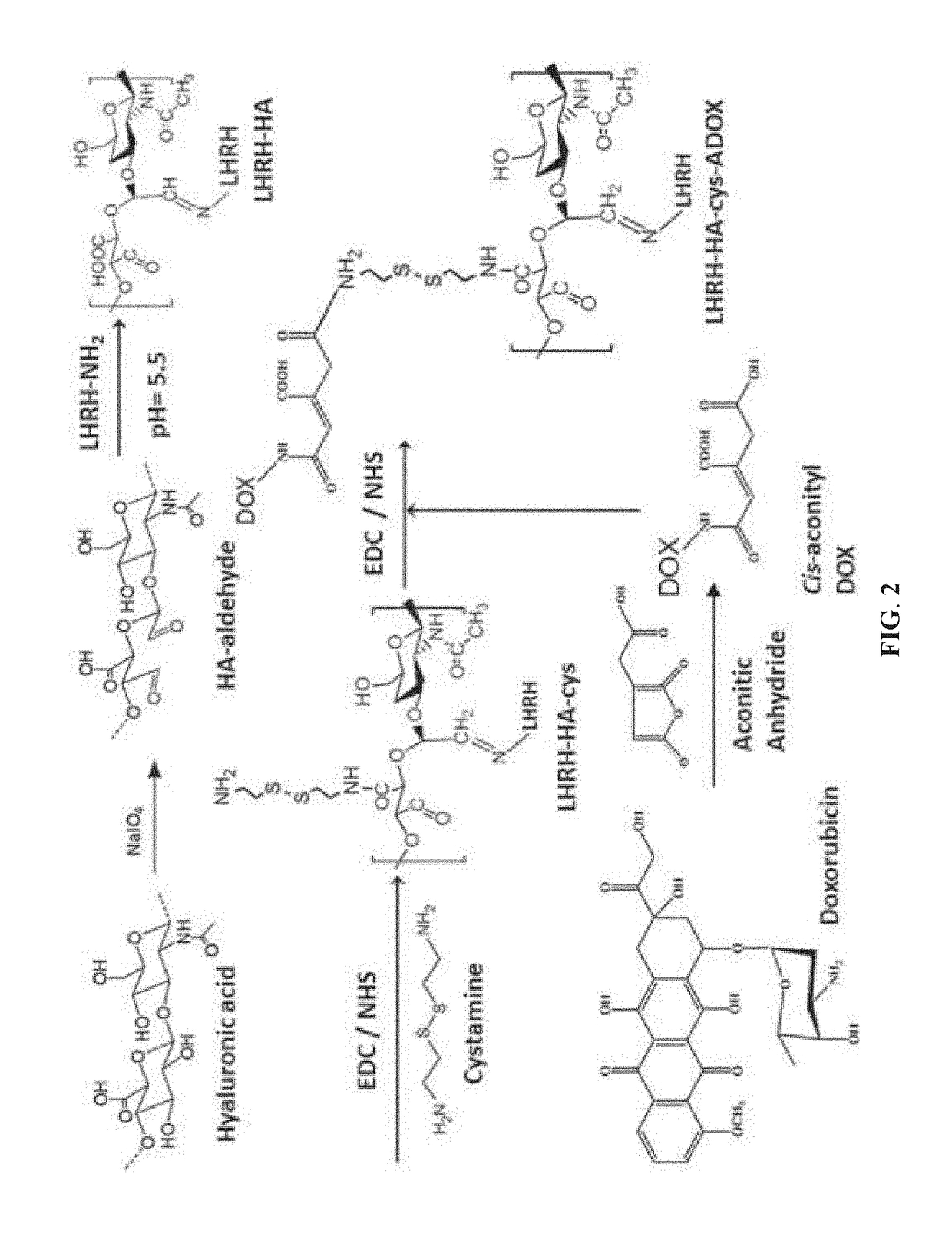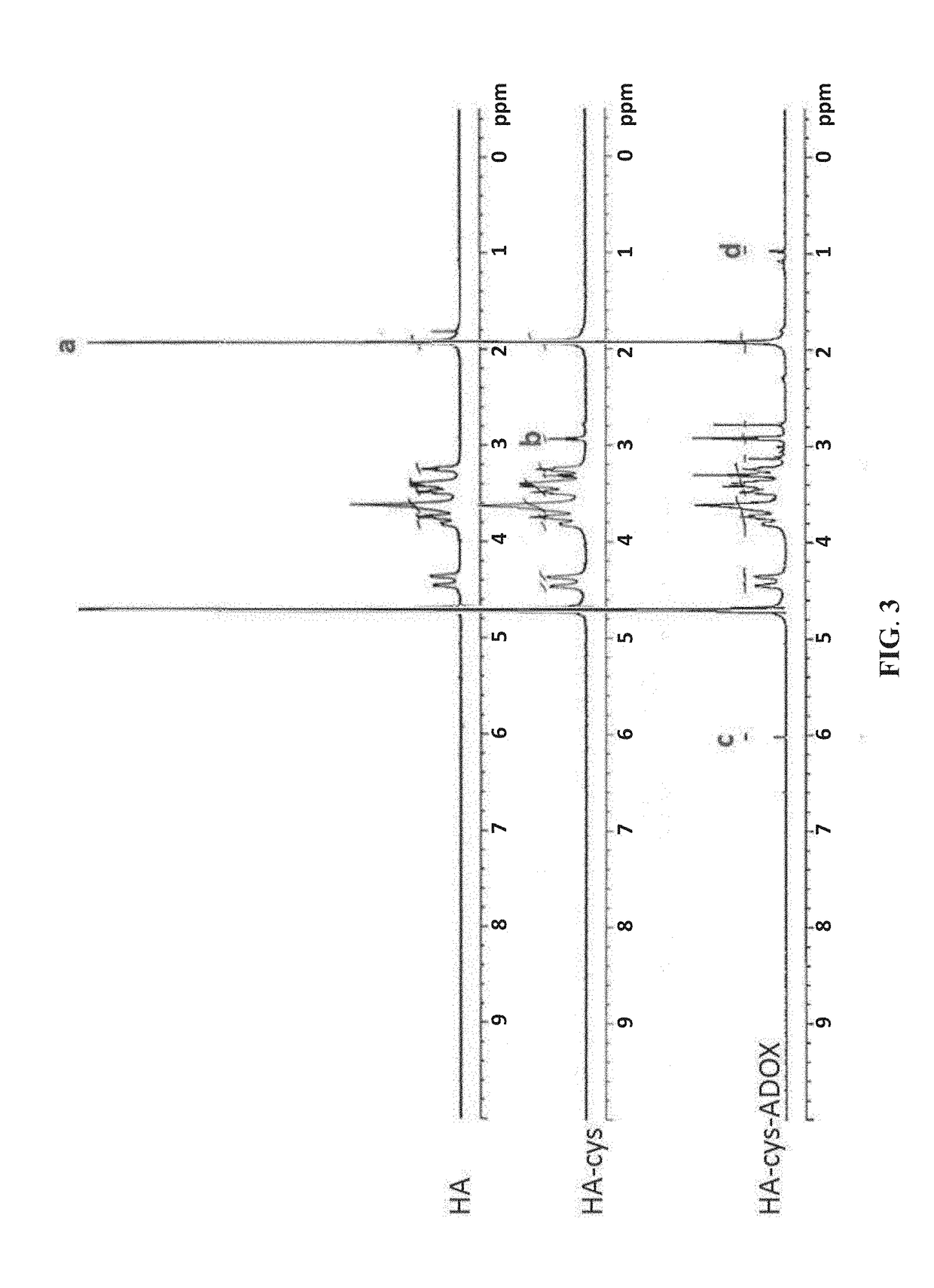Methods of preparing stimuli-responsive multifunctional nanoparticles
a multifunctional, nanoparticle technology, applied in the direction of capsule delivery, peptide/protein ingredients, microcapsules, etc., can solve the problems of poor structural stability in the blood, side effects, and the difficulty of the currently known nanoparticles to possess all the advantages, and achieve safe use, promote endocytosis, and low toxicity
- Summary
- Abstract
- Description
- Claims
- Application Information
AI Technical Summary
Benefits of technology
Problems solved by technology
Method used
Image
Examples
example 1
Preparation of the Targeted Stimuli-Responsive Polymer-Drug Conjugate
1.1 Conjugation of an Active Targeting Moiety to a Hydrophilic Polymer
[0046]This example illustrates the preparation method of the targeted stimuli-responsive polymer-drug conjugate, the forming units of the stimuli-responsive multifunctional nanoparticle of the present invention. An exemplary preparation method is presented in FIG. 2 and detailed in the following paragraphs.
[0047]The first step of the preparation method is conjugating covalently an active targeting moiety to a hydrophilic polymer to form a targeted polymer. In one preferred embodiment, the hydrophilic polymer is a smaller-sized cancer-targeting hydrophilic polymer such as hyaluronic acid (HA) with a molecular weight of below 20 kDa; the active targeting moiety is a small molecule such as a peptide with 5-20 amino acid residues.
[0048]In the following examples, the active targeting moiety is the LHRH peptide, which may be bound by receptors overexpr...
example 2
Preparation and Characterization of the Stimuli-Responsive Multifunctional Nanoparticle
[0056]This example illustrates preparation of the stimuli-responsive multifunctional nanoparticle via self-assembly of the targeted stimuli-responsive polymer-drug conjugate in an aqueous liquid. For example, to prepare LHRH-HA-cys-ADOX nanoparticles, 5 mg of the LHRH-HA-cys-ADOX was dissolved in 1 mL deionized water. The resulting solution was sonicated for 30 min on ice, followed by filtration through a 0.45 μm pore-sized microporous membrane to eliminate non-assembled conjugates. As a comparative example to the LHRH-HA-cys-ADOX nanoparticle of the present invention, HA-cys-ADOX nanoparticles were also prepared according to the abovementioned procedure using the HA-cys-ADOX for self-assembly.
[0057]Particle size and polydispersity index (PDI) of the LHRH-HA-cys-ADOX nanoparticles or the HA-cys-ADOX nanoparticles were estimated by a dynamic light scattering (DLS) using Malvern Zetasizer Nano-ZS90 ...
example 3
In Vitro Drug Release Profile of the Stimuli-Responsive Multifunctional Nanoparticle
[0062]To analyze the drug release profiles of the stimuli-responsive multifunctional nanoparticle of the present invention under conditions of different pH and redox potential, dialysis method was used to evaluate cumulative drug release from the exemplary HA-cys-ADOX nanoparticles, since the HA-cys-ADOX nanoparticles and the LHRH-HA-cys-ADOX nanoparticles of the present invention only differed by the absence or presence of the LHRH peptide for active targeting. For the analysis, the HA-cys-ADOX was dissolved in PBS at the concentration of 2 mg / mL, followed by sonication for 30 min to form a solution of the HA-cys-ADOX nanoparticles. Next, 500 μl of the solution was placed into a cellulose membrane tube and immersed in a vial of 20 ml PBS. The pH and redox potential of the PBS was pre-adjusted with hydrochloric acid or dithiothreitol (DTT) to create an acidic (pH 5.0) or reductive (25 mM DTT) conditi...
PUM
| Property | Measurement | Unit |
|---|---|---|
| pH | aaaaa | aaaaa |
| pH | aaaaa | aaaaa |
| molecular weight | aaaaa | aaaaa |
Abstract
Description
Claims
Application Information
 Login to View More
Login to View More - R&D
- Intellectual Property
- Life Sciences
- Materials
- Tech Scout
- Unparalleled Data Quality
- Higher Quality Content
- 60% Fewer Hallucinations
Browse by: Latest US Patents, China's latest patents, Technical Efficacy Thesaurus, Application Domain, Technology Topic, Popular Technical Reports.
© 2025 PatSnap. All rights reserved.Legal|Privacy policy|Modern Slavery Act Transparency Statement|Sitemap|About US| Contact US: help@patsnap.com



